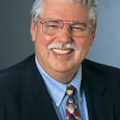MARKET WATCH: Oil prices rebound, gas prices fell prior to Easter weekend
Crude oil recouped some of its earlier loss Apr. 5 ahead of Good Friday and the Easter weekend, but natural gas prices continued to fall in the New York market.
Commodity and equity prices were down in early trading Apr. 9 after the government reported Apr. 6 the addition of only 120,000 US jobs during March. It was the first time since November that the number of new jobs fell below 200,000 and broke what the Associated Press described as “the strongest stretch of job growth since the Great Recession.” Markets were closed Apr. 6 in observance of Good Friday.
The lower-than-expected number of new jobs “prompted investors to rush to the safety of the bond market, which was open for part of the day” on Apr. 6, said analysts in the Houston office of Raymond James & Associates Inc. “The weak jobs report has many believing that QE3 [a third round of “quantitative easing” by the Federal Reserve System to stimulate the US economy] could be coming down the pipe ahead of what is traditionally the worst performing 6-month stretch for the stock market (May through October). Overseas, a disappointing treasury auction out of Spain last week pushed yields even higher, signaling that Euro-zone concerns are still alive and well,” they said.
“While growing US oil supply is clearly driving the US toward energy independence, falling US oil demand is providing a tailwind,” Raymond James analysts reported. “As economies become more developed, oil intensity peaks and begins to decline. In China, where oil intensity has begun to fall in recent years, absolute gross domestic product growth rates remain high enough for oil demand to still move up. In the US and other industrialized countries, however, it is now very difficult to achieve the level of GDP growth that's needed for oil demand to increase.”
Raymond James listed four key factors why US oil demand is down roughly 5% so far this year: rising fuel economy, changing driving habits, more natural gas-powered vehicles, and a shift to more natural gas in petrochemicals. “All of these are secular themes; in other words, they are likely to persist for the next several years,” the analysts said. “The US continues to use more oil per capita than any other major economy, but the historical trend would suggest that oil intensity among various countries tends to converge over time.”
Energy prices
The May contract for benchmark US light, sweet crudes recouped $1.84 to $103.31/bbl Apr. 5 on the New York Mercantile Exchange. The June contract increased $1.80 to $103.83/bbl. On the US spot market, West Texas Intermediate at Cushing, Okla., was up $1.84 to $103.31/bbl.
Heating oil for May delivery rebound by 0.83¢ to $3.17/gal on NYMEX. Reformulated stock for oxygenate blending for the same month regained 0.69¢ to $3.34/gal.
The May natural gas contract continued to drop, however, down 5.2¢ to $2.09/MMbtu on NYMEX. On the US spot market, gas at Henry Hub, La., fell 7.9¢ to $1.98/MMbtu, wiping out its gain from the previous session.
In London, the May IPE contract for North Sea Brent recovered $1.09 to $123.43/bbl. Gas oil for April continued to fall, down $5.75 to $1,007/tonne.
The Organization of Petroleum Exporting Countries’ office in Vienna was closed Apr. 6 and Apr. 9, so no price updates for its basket of 12 benchmark crudes were available.
Contact Sam Fletcher at [email protected].
About the Author

Sam Fletcher
Senior Writer
I'm third-generation blue-collar oil field worker, born in the great East Texas Field and completed high school in the Permian Basin of West Texas where I spent a couple of summers hustling jugs and loading shot holes on seismic crews. My family was oil field trash back when it was an insult instead of a brag on a bumper sticker. I enlisted in the US Army in 1961-1964 looking for a way out of a life of stoop-labor in the oil patch. I didn't succeed then, but a few years later when they passed a new GI Bill for Vietnam veterans, they backdated it to cover my period of enlistment and finally gave me the means to attend college. I'd wanted a career in journalism since my junior year in high school when I was editor of the school newspaper. I financed my college education with the GI bill, parttime work, and a few scholarships and earned a bachelor's degree and later a master's degree in mass communication at Texas Tech University. I worked some years on Texas daily newspapers and even taught journalism a couple of semesters at a junior college in San Antonio before joining the metropolitan Houston Post in 1973. In 1977 I became the energy reporter for the paper, primarily because I was the only writer who'd ever broke a sweat in sight of an oil rig. I covered the oil patch through its biggest boom in the 1970s, its worst depression in the 1980s, and its subsequent rise from the ashes as the industry reinvented itself yet again. When the Post folded in 1995, I made the switch to oil industry publications. At the start of the new century, I joined the Oil & Gas Journal, long the "Bible" of the oil industry. I've been writing about the oil and gas industry's successes and setbacks for a long time, and I've loved every minute of it.